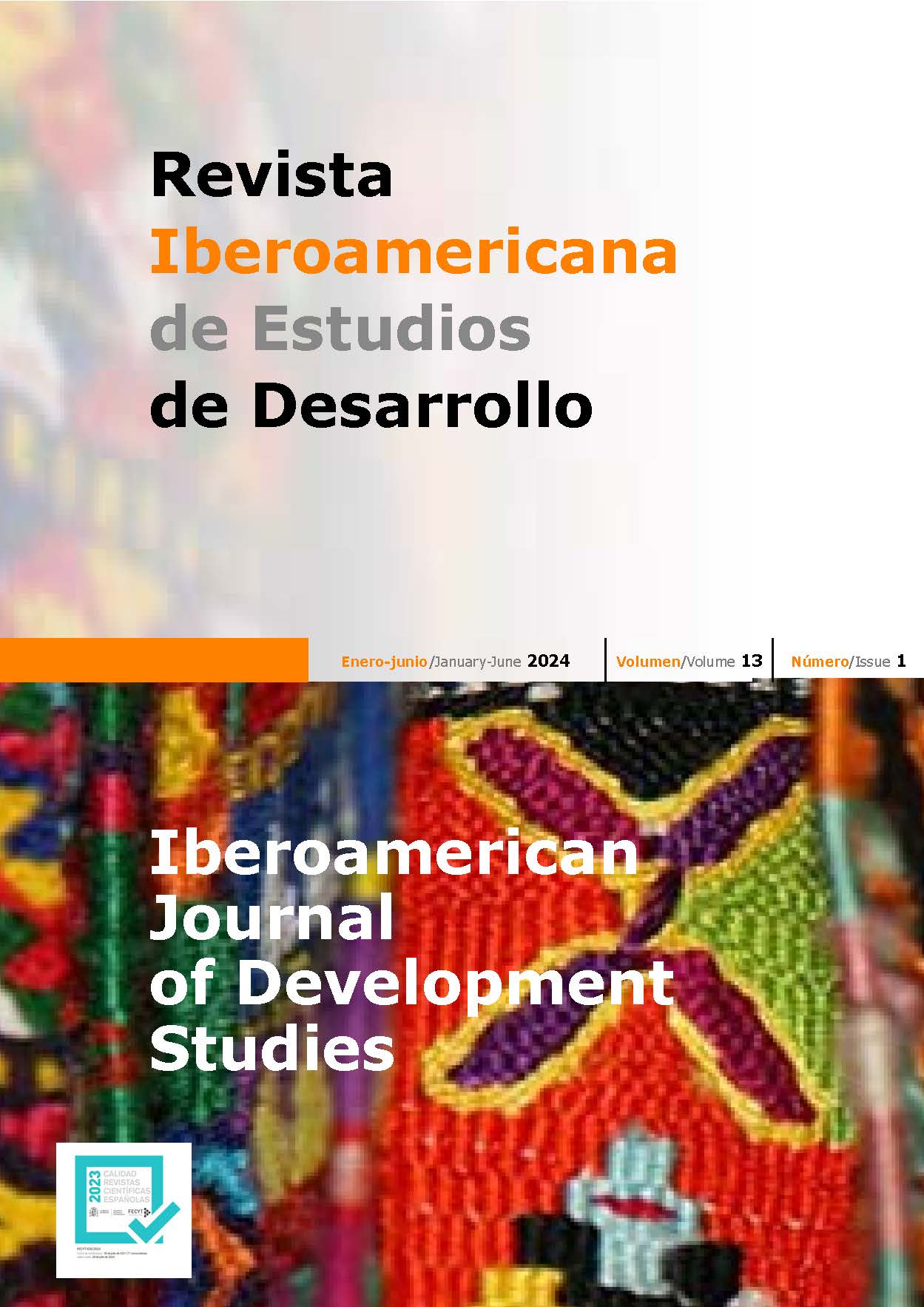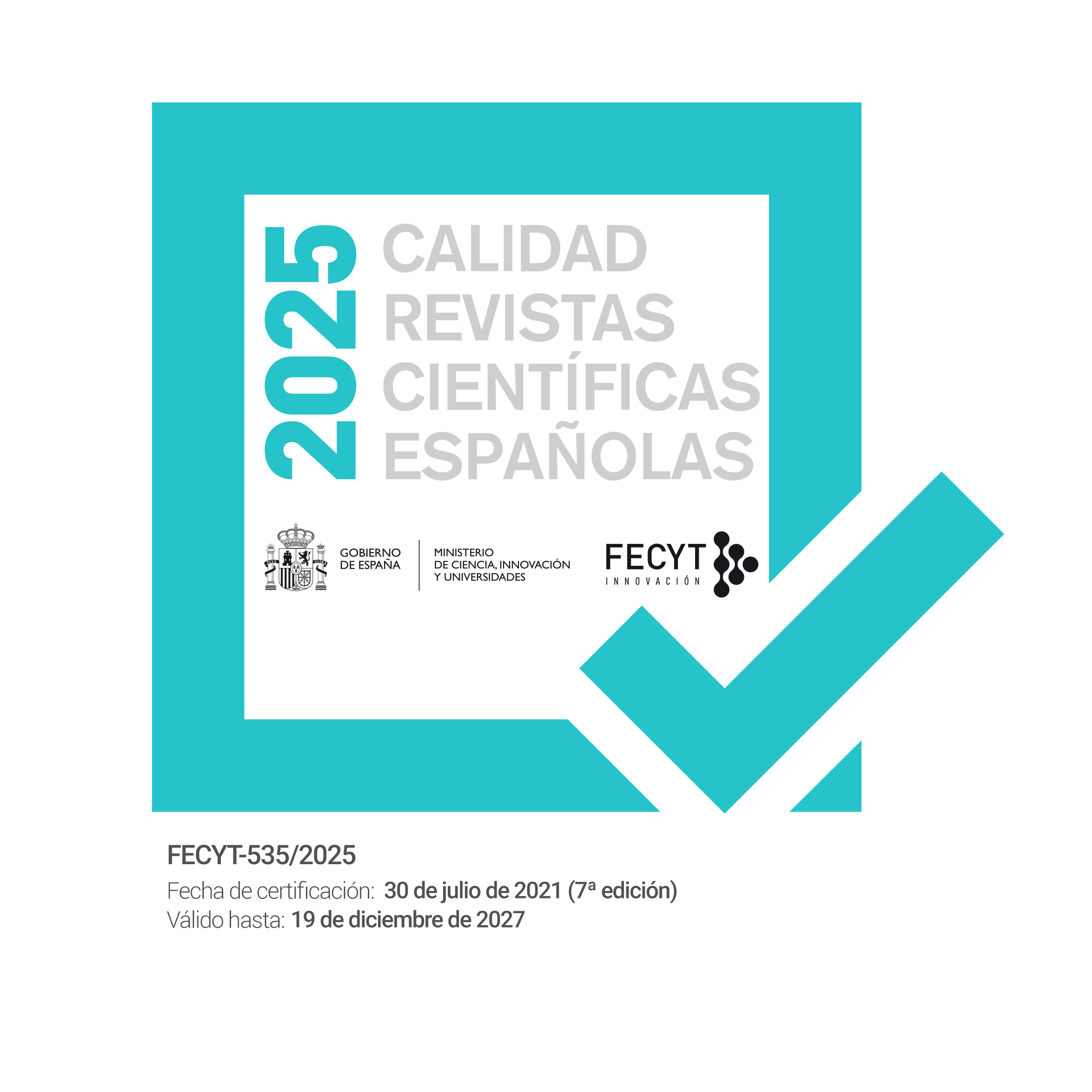Indigenously controlled tourism as struggle for autonomy: the Pataxó Jaqueira Reserve in Brazil
DOI:
https://doi.org/10.26754/ojs_ried/ijds.820Palabras clave:
control territorial, fortalecimiento cultural, protección ambiental, pueblos indígenas, BahíaResumen
En este estudio, se analiza la experiencia emblemática de un grupo indígena en Brasil, los pataxós, que logró instalar y ejercer un fuerte control sobre un proyecto de turismo indígena: la Reserva Jaqueira. Con base en el análisis de documentos, entrevistas y observaciones, mostramos cómo la Reserva de Jaqueira se consolidó no solo como una iniciativa fuertemente autónoma, sino también como componente de una mayor búsqueda de autonomía (para construir medios de vida conducentes a la revitalización cultural y la protección del medio ambiente). La experiencia de Pataxó muestra que el turismo indígena puede ser un instrumento de luchas indígenas mayores y, como tal, desarrollarse no solo a pesar de la marginación, sino también en contra de ella.
Descargas
Referencias
A TARDE (1989). Imobiliaria e tribo Pataxo disputam uma mesma área de terra. September 1, 1989. https://documentacao.socioambiental.org/noticias/anexo_noticia/28477_20140930_192047.pdf, accessed September 15, 2022.
A TARDE (1996a). Indios Pataxó são contra projeto de desapropriacão. January 9, 1996. https://documentacao.socioambiental.org/noticias/anexo_noticia/28569_20141009_170423.pdf, accessed September 15, 2022.
A TARDE (1996b). Pataxós podem ser expulsos de Coroa Vermelha. December 16, 1996. https://documentacao.socioambiental.org/noticias/anexo_noticia/28608_20141014_115239.pdf, accessed September 15, 2022.
A TARDE (1997a). Empresa devasta área dos Pataxós na Mata Atlantica. October, 9, 1997. https://documentacao.socioambiental.org/noticias/anexo_noticia/28637_20141015_154914.pdf, accessed September 15, 2022.
A TARDE (1997b). Área ocupada já tem 400 pataxós. October 11, 1997. https://documentacao.socioambiental.org/noticias/anexo_noticia/28638_20141015_160129.pdf, accessed September 15, 2022.
A TARDE (1997c). Ministro decide que a posse de Coroa Vermelha é dos pataxós. October 16, 1997. https://documentacao.socioambiental.org/noticias/anexo_noticia/28644_20141016_121745.pdf, accessed September 15, 2022.
BAHIA STATE (1943). Decreto-Lei 12.729 of April 19, 1943. https://acervo.socioambiental.org/sites/default/files/documents/F0D00593.pdf, accessed September 15, 2022.
BAHIA STATE (1961). Decreto 242 of November 29, 1961. https://acervo.socioambiental.org/acervo/documentos/decreto-n-242-de-291161-cria-o-parque-nacional-de-monte-pascoal, accessed September 15, 2022.
BARKER J (ed.) (2005). Sovereignty Matters: Locations of Contestation and Possibility in Indigenous Struggles for Self-Determination. University of Nebraska Press, Lincoln (Nebraska).
BHABHA HK (2003). The Other Question: Difference, Discrimination and the Discourse of Colonialism. In: Barker F, Hulme P, Iversen M, Loxley D (eds.). Literature Politics & Theory. Routledge, London.
BOMFIM AB (2017). Patxohã: a retomada da língua do povo Pataxó. Linguística 1:303-327.
BRESNER K (2014). Sharing Identity through Indigenous Tourism: Osoyoos Indian Band’s Nk’Mip Desert Cultural Centre. Anthropologica 56 (1).
CAMARGO BA, WINCHENBACH A, VÁZQUEZ-MAGUIRRE M (2022). Restoring the dignity of indigenous people: perspectives on tourism employment. Tourism Management Perspectives 41:100946.
CARR A, RUHANEN L, WHITFORD M (2016). Indigenous peoples and tourism: the challenges and opportunities for sustainable tourism. Journal of Sustainable Tourism 24 (8-9):1067-1079.
CARVALHO MR (2009). Monte Pascoal, the Pataxó indians and the fight for ethnic recognition. Dossiê Cad. CRH 22(57).
CASTORIADIS C (1991). Philosophy, Politics, Autonomy. Oxford University Press, New York.
CESAR ALS (2011). Lições de Abril: a construção da autoria entre os Pataxó de Coroa Vermelha. EDUFBA, Salvador. https://repositorio.ufba.br/bitstream/ri/5374/1/_LicoesLicoes%20de%20Abril_%20a%20construcaoo%20da%20autoria%20entre%20os%20Pataxo%20de%20Coroa%20Vermelha.pdf, accessed September 15, 2022.
CHATTERTON P (2005). Making autonomous geographies: Argentina’s popular uprising and the «Movimiento de Trabajadores Desocupados» (Unemployed Workers Movement). Geoforum 36(5):545-561.
COATES K (2004). A Global History of Indigenous People: Struggle and Survival. Palgrave Macmillan, London.
DE BURLO CR (2000). Indigenous. In: Jafari J (ed.). Encyclopedia of tourism. Routledge, London, pp. 303-304.
DEININGER K, JIN S (2006). Tenure security and land-related investment: evidence from Ethiopia. European Economic Review 50(5):1245-1277.
FEINBERG J (1986). Harm to Self. Oxford University Press, New York.
FISHER E (2014). Constitutional Struggle and Indigenous Resistance in Latin America. Latin American Perspectives 41(6):65-78.
FOUCAT VS (2002). Community-based ecotourism management moving towards sustainability, in Ventailla, Oxaca, Mexico. Ocean & Coastal Management 45(8):511-529.
FREIRE P (1970). Pedagogia do oprimido. Rio de Janeiro: Paz e Terra.
GONZÁLEZ M (2015). Indigenous Territorial Autonomy in Latin America: An Overview. Latin American and Caribbean Ethnic Studies 10(1):10-36.
GRÜNEWALD RA (2015). Turismo na Terra Indígena Pataxó de Coroa Vermelha: imperialismo e pós‑colonialidade na região do Descobrimento do Brasil. Passos 13(2):411-424.
GUDYNAS E (2022). Postdevelopment and other critiques of development. In: Veltmeyer H, Bowles P (eds.). The Essential Guide to Critical Development Studies. Routledge, Abingdon (Oxon), pp. 49-56.
HALE CR (2011). Resistencia para qué? Territory, autonomy and neoliberal entanglements in the «empty spaces» of Central America. Economy and Society 40(2):184-210.
HASELAGER WFG (2005). Robotics, philosophy and the problems of autonomy. Pragmatics & cognition 13(3):515-532.
HINCH T, BUTLER R (2007). Introduction: revisiting common ground. In: Butler R, Hinch T (eds.). Tourism and indigenous peoples. Butterworth-Heinemann, Oxford, pp. 1-12.
HOOGESTEGER J, VERZIJL A (2015). Grassroots scalar politics: insights from peasant water struggles in the Ecuadorian and Peruvian Andes. Geoforum 62:13-23.
JORNAL DA BAHIA (1982). Igreja participa da luta. April 18, 1982. https://documentacao.socioambiental.org/noticias/anexo_noticia/43590_20171026_095824.PDF, accessed September 15, 2022.
KEALIIKANAKAOLEOHAILILANI K, GIARDINA CP (2016). Embracing the sacred: an indigenous framework for tomorrow’s sustainability science. Sustain Science 11:57-67.
KHALID S, AHMAD MS, RAMAYAH T, HWANG J, KIM I (2019). Community Empowerment and Sustainable Tourism Development: The Mediating Role of Community Support for Tourism. Sustainability 11(22):6248.
KRÖGER M, LALANDER R (2016). Ethno-territorial rights and the resource extraction boom in Latin America: do constitutions matter? Third World Quarterly 37(4):682-702.
LACERDA MB (2019). O novo conservadorismo brasileiro: de Reagan a Bolsonaro. Zouk, Porto Alegre.
LALANDER R, LEMBKE M, PORSANI J (2023). Livelihood Alterations and Indigenous Innovators in the Ecuadorian Amazon. Alternautas 10(1):95-125, https://journals.warwick.ac.uk/index.php/alternautas/article/view/1319, acceso 28 de julio de 2023.
LAMA WB (2000). Community-based tourism for conservation and women’s development. In: Godde PM, Price MF, Zimmermann FM (eds.). Tourism and development in mountain regions. CABI Publishing, New York, pp. 221-238.
LARSON AM (2010). Making the «rules of the game»: constituting territory and authority in Nicaragua’s indigenous communities. Land Use Policy 27(4):1143-1152.
LUKES S (2006). Individualism. ECPR Press, Colchester.
MANYARA G, JONES E (2007). Community-based tourism enterprises development in Kenya: an exploration of their potential as avenues of poverty reduction. Journal of Sustainable Tourism 15(6):628-644.
MAY T (1994). The concept of autonomy. American Philosophical Quarterly 31(2):133-144.
MTAPURI O, GIAMPICCOLI A (2013). Interrogating the role of the state and nonstate actors in community-based tourism ventures: toward a model for spreading the benefits to the wider community. South African Geographical Journal 95(1):1-15.
NIEZEN R (2004). A World Beyond Difference: Cultural Identity in the Age of Globalization. Wiley-Blackwell, Malden (Massachusetts).
NUNKOO R, RAMKISSOON H (2011). Residents’ satisfaction with community attributes and support for tourism. Journal of Hospitality and Tourism Research 35:171-190.
O DIA (1983). Pataxós com fome fogem da reserva. Dezember 26, 1983. https://documentacao.socioambiental.org/noticias/anexo_noticia/28429_20140925_100304.pdf, accessed September 15, 2022.
OLIVEIRA JP (2018). Fighting for lands and reframing the culture. Vibrant Virtual Brazilian Anthropology 15(2).
PAILEY RN (2022). Race in/ and development. In: Veltmeyer H, Bowles P (eds.). The Essential Guide to Critical Development Studies. Routledge, Abingdon (Oxon), pp. 31-39.
PEREIRO X (2016). A review of Indigenous tourism in Latin America: reflections on an anthropological study of Guna tourism (Panama). Journal of Sustainable Tourism 24(8-9):1121-1138.
RAZ J (1986). The Morality of Freedom. Oxford University Press, New York.
RICHARDS G, HALL D (2020). The community: a sustainable concept in tourism development? In: Richards G. & Hall D. (eds.) Tourism and Sustainable Community Development Routledge, London, pp. 1-13.
ROCHELEAU DE (2015). Networked, rooted and territorial: green grabbing and resistance in Chiapas. The Journal of Peasant Studies 42(3-4):695-723.
ROSÁRIO DE CARVALHO M (2009). O Monte Pascoal, os índios Pataxó e a luta pelo reconhecimento étnico. Caderno CRH 22(57):507-521.
RYAN C (2005). Who Manages Indigenous Cultural Tourism Product: Aspiration and Legitimization. In: Aicken M, Ryan C (eds). Indigenous Tourism: The Commodification and Management of Culture. Elsevier, Oxford, pp. 69-73.
SAMPAIO JAL (1996). «Sob o signo da cruz» ou relatório circunstanciado de identificação e delimitação da terra indígena Coroa Vermelha. FUNAI. https://acervo.socioambiental.org/acervo/documentos/sob-o-signo-da-cruz-ou-relatorio-circunstanciado-de-identificacao-e-delimitacao, accessed September 15, 2022.
SCHEYVENS R (2002). Tourism for development empowering community. Prentice Hall, Harlow.
SEBELE LS (2010). Community-based tourism ventures, benefits and challenges: Khama rhino sanctuary trust, central district, Botswana. Tourism Management 31(1):136-146.
SILVA ECA (2017). Conservadorismo, Bancada Ruralista e Indígenas. Temporalis, Brasília (DF) 34, july-december.
STEWART-HARAWIRA M (2022). Colonialism’s miasmas: indigenous resistance and resilience. In: Veltmeyer H, Bowles P (eds.). The Essential Guide to Critical Development Studies. Routledge, Abingdon (Oxon), pp. 358-365.
THIMM T, KARLAGANIS C (2020). A conceptual framework for indigenous ecotourism projects – a case study in Wayanad, Kerala, India. Journal of Heritage Tourism 15(3):294-311.
THOMAZINE PORTO H, BONIN JA (2020). Pataxó indigenous education: between dystopias and utopias. Tellus 41:101-128.
THOMSON-CARR A (2013). Maori tourism. A case study of managing Indigenous cultural values. In: Smith M, Richards G (eds.). The Routledge handbook of cultural tourism. Routledge, London, pp. 227-235.
TOSUN C (2000). Limits to community participation in the tourism development process in developing countries. Tourism Management 21(6):613-633.
ULLOA A (2017). Perspectives of Environmental Justice from Indigenous Peoples of Latin America: A Relational Indigenous Environmental Justice. Environmental Justice 10(6):175-180.
UNITED NATIONS (2021). State of the World’s Indigenous Peoples: Rights to Land Territories and Resources, vol. 5. Department of Economic and Social Affairs, United Nations. https://www.un.org/development/desa/indigenouspeoples/wp-content/uploads/sites/19/2021/03/State-of-Worlds-Indigenous-Peoples-Vol-V-Final.pdf, accessed September 15, 2022.
VIRTANEN PK, SIRAGUSA L, GUTTORM H (2020). Introduction: toward more inclusive definitions of sustainability. Current Opinion in Environmental Sustainability 43:77-82.
VOLKMAN TA (1990). Visions and revisions: Toraja culture and the tourist Gaze. American Ethnologist 17(1):91-110.
WHITFORD M, RUHANEN L (2016). Indigenous tourism research, past and present: where to from here? Journal of Sustainable Tourism 24(8-9):1080-1099.
WOLFF RP (1970). In Defense of Anarchism. Harper and Row, New York.
YIN RK (2003). Case Study Research: Design and methods. Sage Publications, London.
ZEPPEL H (2006). Indigenous ecotourism: sustainable development and management. Ecotourism Book Series. CAB International, Oxfordshire.
ZEPPEL H (2007). Indigenous ecotourism: conservation and resources rights. In: Higham J (ed.). Critical issues in ecotourism. Understanding a complex tourism phenomenon. Elsevier, Oxford, pp. 308-348.
ZILIO, R (2022). Insurgent spatial practices of the indigenous movement in Brazil in the face of the contemporaneous juridical-legal offensive. Ateliê Geográfico 16(3):305-322.
Descargas
Publicado
Número
Sección
Licencia
Derechos de autor 2024 Juliana Porsani, Rickard Lalander, Kari Lehtilä, Jocimar Da Conceição-Carvalho, Juari Braz-Bomfim

Esta obra está bajo una licencia internacional Creative Commons Atribución-NoComercial-SinDerivadas 4.0.






